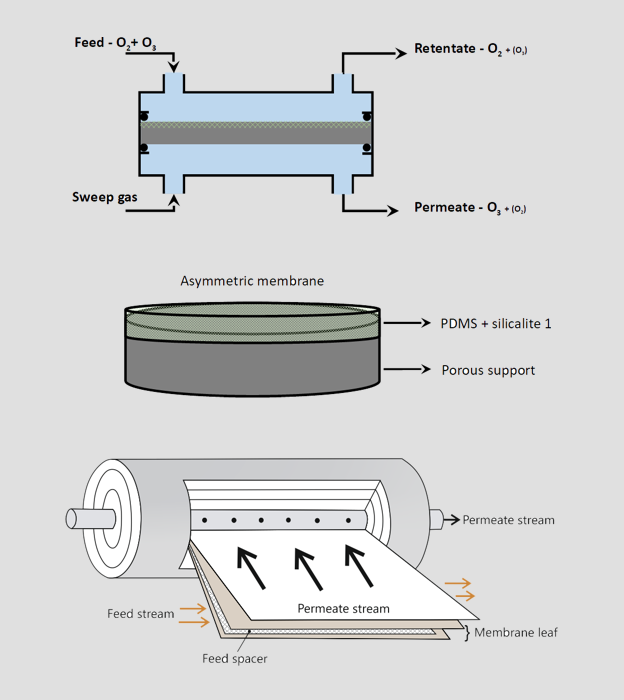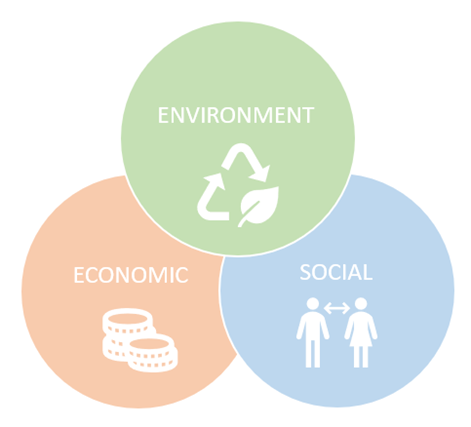OZONE4WATER Project
The global objective of the OZONE4WATER project is to develop a new ozone technology for water/wastewater treatment, offering means to the wider implementation of ozone-based solutions. In particular, the project has three goals:


Development of functionalized membranes for ozone/oxygen separation to obtain an ozone-enriched gas stream, allowing for O3 generation at lower concentration utilizing a lower specific power; simultaneously the O2 from the mixture of O2/O3 can be recovered and recycled back to the O3 generator, thereby saving costs for the energy to produce O2 and reduce the O2 consumption.

Development of a low footprint ozone side stream contacting train, integrating the O3/O2 separation unit with a pressurized static micro/meso-structured mixer (NETmix), able to enhance the ozone mass transfer from the gas phase to the liquid phase to 100% or very close to it, leading to a bubble-free O3 enriched water stream, resulting in a downstream highly compact reaction chamber.

Assessment of the efficiency of the disruptive ozone technology for water and urban wastewater treatment.

The main expected outcomes include:
i) Novel low footprint ozone side stream contacting train, able to: i) reduce in 30%-70% the energy required to produce an ozone gas-stream with a high ozone concentration (>25%), ii) reduce in 60-75% the oxygen consumption when compared to traditional systems; iii) reduce O3 supply demands in 10%, iv) reduce in 25% the contacting time required in the reaction chamber to achieve water/wastewater treatment, resulting in a highly compact reaction chamber;
ii) Powerful cost-effective ozonation system able to promote the elimination of contaminants of emerging concern (CECs), Antibiotic Resistant Bacteria (ARB), Antibiotic Resistant Genes (ARGs) and new epidemic virus, producing safe drinking water and safe treated urban wastewater for irrigation, protecting the ecosystems and human health.
The project will start with the development of ceramic and mixed matrix membranes, with customized properties for ozone/oxygen separation. The membrane properties will be assessed and included in a mathematical model for design and optimization of the gas separation and dissolution processes, considering a tube-in-tube membrane configuration.

The prototype will be validated for pre- and post-oxidation of freshwater and tertiary treatment of urban wastewater, thereby allowing for access to safe and affordable drinking water and production of irrigation-grade treated urban wastewater, safe for reuse in agriculture, contributing to sustainable water-resource management and ecosystem protection and sustainable economic growth (in agreement with the goals 6 and 13 of UN 2030 Agenda).


